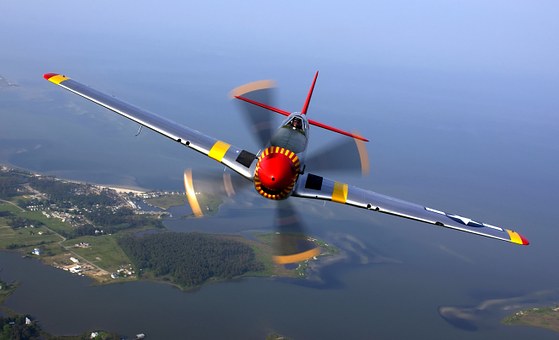Effect of Rain & Snow on Jet Engines...
You might have some question like....
- How can a jet engine work when it rains or snows?
- Wouldn't the water put out the flame inside?
- How is water removed from a jet engine in rainy conditions?
- Does rain or snow ingestion affect the efficiency of a jet engine?
Answers are here...
As we know a jet engine works by compressing incoming air, mixing it with fuel, igniting that mixture, and exhausting the high-pressure gases to produce thrust. The initial compression is accomplished through a series of rotating blades called compressors. After jet fuel is added through a fuel injection system, the mixture is burned in a combustion chamber. The exhaust moves through another series of rotating blades called the turbine that powers the engine and finally through a nozzle.
 |
Simple Jet Engine |
The biggest danger posed by forms of precipitation like rain, snow, ice, or fog is an engine flame-out. A flame-out is defined as a loss of engine power that is not caused by a mechanical failure. The three items needed to keep a jet engine operating are fuel, air, and a source of heat to make them burn. Loss of any one of these three can result in a flame-out. Flame-outs are generally rare and occur only about once in every 100,000 non-military flights.
Not only are flame-outs themselves rare, but precipitation is unlikely to be the cause of one. While rain can have an influence on the function of a jet engine, it is typically not a significant effect. The majority of storms produce light rain or snow that has little if any impact on an engine. Clouds are also made of small ice crystals that have no appreciable effect. In general, only very intense storms affect engine behavior and aircraft will usually make a detour to avoid storms this strong anyway. The fear is primarily because of turbulence that produces a very uncomfortable ride rather than engine performance problems. Even in a strong storm, however, the main consequence a jet engine experiences is a reduction in the efficiency of the combustion process. This efficiency is a function of the fuel-air ratio that is changed by the presence of water vapor.
 |
Ice formation on an engine cowl and fan blades |
This effect is negligible under most conditions since the percentage of water present in the large volume of air entering an engine is still relatively small in most storms. The high temperature in the engine's combustion chamber quickly evaporates this level of water into steam that has little influence on the engine's power output. Air also passes through the engine quite quickly since a typical engine on a commercial airliner cycles through a volume of air comparable to that in an average house each second.
Many turbofan engines also take advantage of their bypass air system to remove precipitation from the airflow before it reaches the combustion section. As the incoming air moves into the rotating fan blades, the spinning motion flings the heavier water outward like a centrifuge. The water is then blown through the bypass air ducts that surround the engine core. In this way, the water is carried through the engine without ever entering the combustion chamber. This design allows a turbofan engine to remove the majority of water that it will ever ingest while flying through a storm. Whatever small amount of water remains in the air passing through the core will be evaporated and can easily be handled by the engine.
 |
| Ice accumulation on the spinner of a jet engine |
The forms of precipitation that are most difficult to deal with are large hail, ice, and freezing rain. Large hail is only found in very strong storms that are generally avoided because of the turbulence problems discussed earlier, and hail impacts can also damage the engine or the aircraft's skin. Freezing rain is troublesome when it forms ice on the engine inlet or the center of the engine spinner. As the ice builds up, chunks may break off and enter the engine causing damage to fan blades or disrupting the airflow and combustion process. Ice is usually prevented by heating systems that warm the surfaces where ice is most likely and discourages its formation. The center hub of some engines is also covered in small sections of rubber that vibrate as ice starts to form causing the ice to shed before it grows into large and dangerous chunks. During freezing rain while sitting on the ground waiting for takeoff, pilots are also trained to rev the engines frequently to prevent ice accumulation.
Another design feature that helps keep a jet engine operating in heavy precipitation is igniters, similar to spark plugs, in the combustion section. In the event that the engine suffers a flame-out, the igniters will re-ignite the fuel-air mix and restart the engine. Manufacturers recommend that igniters always be turned on whenever a plane's anti-icing equipment is in use or when flying through heavy storms to assist the combustion process. This practice is also recommended when taking off from a runway with standing water since the landing gear can throw up a sheet of water that may be ingested by the engines causing a flame-out. Some modern engines are equipped with electronic systems that detect the state of the combustion process and tell the flight crew to engage the igniters. Engines may also have systems that turn the igniters on or restart the engine automatically.





Comments
Post a Comment